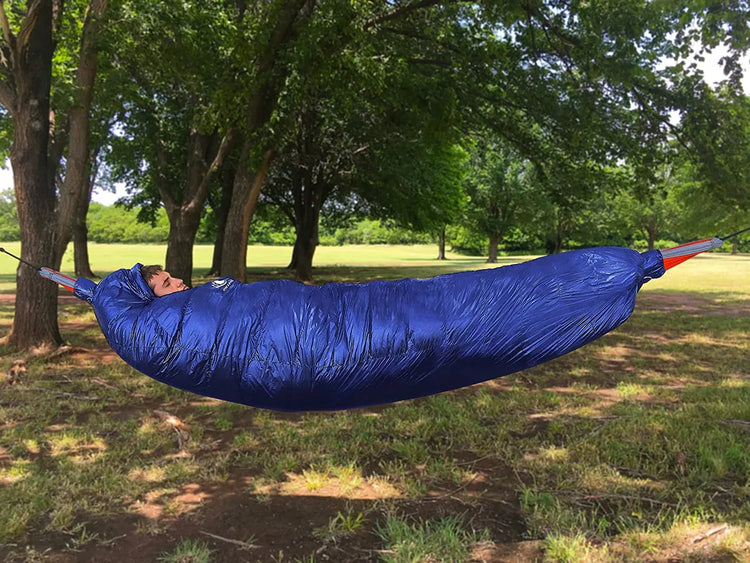Embracing the great outdoors by hammock camping can be a delightful experience. Ensuring warmth and comfort during this adventure, however, requires the right equipment. The debate between under quilts and sleeping pads is longstanding. In this article, we'll delve into the specifics of each to help you make the best choice for your hammock camping needs.
1. Foam Pad: The Affordable Comfort
Spotlight: Therm-a-Rest Z Lite Pad
The Therm-a-Rest Z Lite Pad is an excellent example of a foam pad's potential. Light on the wallet and the back, this pad offers adequate warmth and comfort. Here's a closer look:
-
Pros:
- Lightweight and budget-friendly.
- Provides decent warmth and comfort.
-
Cons:
- Cold spots can emerge around the arms and shoulders, especially where the body contacts the hammock's sides.
- Rolling over or adjusting during sleep can lead to slipping off the pad, exposing the body to the cold.
- The foam structure may trap sweat or condensation, leading to an uncomfortable damp feeling.
2. Inflatable Pad: The Luxurious Alternative
Spotlight: Old Therm-a-Rest Self-Inflating Pad XL
Inflatable pads, like the Therm-a-Rest self-inflating version, can be a more comfortable alternative to foam pads:
-
Pros:
- Enhanced comfort due to a softer surface.
- Easy to adjust for the ideal sleeping position without sticking to the hammock.
-
Cons:
- Still presents breathability issues, which can cause condensation or sweat buildup between the user and the pad.
3. Underquilts: The Breathable Insulator
Spotlight: Arrowhead Equipment Jarbidge Underquilt
Underquilts have become many hammock campers' go-to solution for various reasons:
-
Pros:
- Breathability prevents sweat buildup, allowing for a dry sleeping experience.
- Offers insulation consistently, wrapping around the body and adapting to different sleeping positions.
- Insulation extends to the sides, preventing cold spots.
-
Cons:
- Setting up an underquilt demands precision to avoid cold spots, especially near the ends.
- Typically pricier than foam or inflatable pads.
- Adjustments using shock cords and bungees might seem overwhelming initially.
Conclusion and Recommendations:
Underquilts, particularly down variants, stand out for their warmth and breathability, making them ideal for a cozy hammock camping experience. However, their higher price point might deter some. On the other hand, sleeping pads, especially foam ones, provide a cost-effective solution, albeit with some comfort trade-offs.
For those eager to delve deeper into the world of hammock insulation, hammockforums.net is a treasure trove of information and expert advice. Whatever your choice, ensuring warmth and comfort during your hammock camping trip is paramount.
Explore Our Comprehensive Guide on the Top 25 things to bring while camping with your girlfriend


